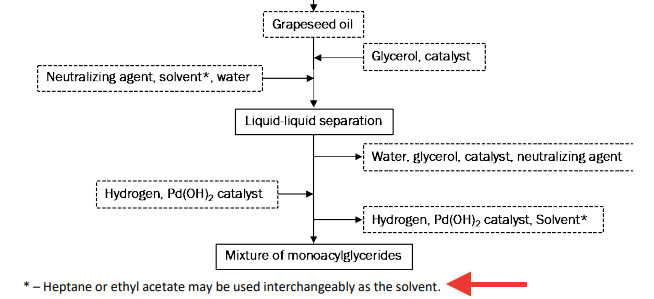This is a series of videos and information Agronomist, Iman Safi, has produced to encourage…
Apeel-ing (Appealing) Or Not?
Australian fruit and veg is hiding a ‘hazardous’ issue
 Read more of this article here: https://www.news.com.au/lifestyle/food/food-warnings/australian-fruit-and-veg-is-hiding-a-hazardous-issue/news-story/ea6d88ff7d192c8237c422fa4c1abcea
Read more of this article here: https://www.news.com.au/lifestyle/food/food-warnings/australian-fruit-and-veg-is-hiding-a-hazardous-issue/news-story/ea6d88ff7d192c8237c422fa4c1abcea
Have you seen little stickers on citrus fruit, melons, pineapples, bananas, papayas, mangoes, avocados, and pomegranates. Even if they dont have this sticker, they still may contain a coating, a coating that is a thin, edible postharvest coating made from plant-derived materials that extends the shelf-life of fresh fruits and vegetables by slowing moisture loss and reducing oxidation. So this will keep our produce fresher for longer.
Sound Apeel-ing (appealing) or not? Let’s have a closer look at Apeel.
Apeel Sciences was founded in 2012, with a grant from the Bill & Melinda Gates Foundation, by James Roger, who is CEO of the company and has a PhD in Materials.
Apeel says that their goal is to reduce food waste by coating fruits and vegetables with an edible layer of fatty acids which prevents produce from oxidizing, as in, the fruit will not go bad. This coating is distributed to partners as a powder. It is then mixed with water at packaging centre. This can then be applied as a spray, dip or brushed on.
They say that their products do not contain hazardous ingredients that will cause harm to people or the environment within the context of their intended use.
So what is this coating? It is composed of food grade mono- and diglycerides of fatty acids (E 471) derived from plants.
That sounds safe, is it though? These fatty acids may contain trans fats, which we know can be harmful to ones health.
Also there are two stages in the manufacturing process that require the use of a solvent. In both cases, the solvent is either heptane or ethyl acetate.
Ethyl acetate is a flavoring agent and solvent used in paints, lacquers, perfumes, and processed foods, and is “toxic when ingested or inhaled”.
Heptane is used in test fuels, petroleum refinement, cement, inks, and as a food solvent in small amounts, with side effects as, skin rashes, nausea, headache, and more if exposed directly to heptane.

The below details the following components and amounts included in this product being sprayed on our food:
- Soap (as sodium oleate) – Not more than 6%
- Ethyl acetate – Not more than 4.58 mg per day (at 21,000 ppm*)
- Heptane – Not more than 5.01 mg per day (at 23,000 ppm*)
- And the following metals*:

* These numbers are calculated using parts per million to determine the volume of these toxic substances in the end product
Here is the article that mentions more of the above information: https://muneezaahmed.com/toxic-foods-alert-apeel-coating-technology
Not only is our produce coated in this, a majority of Australian produce undergoes extensive chemical treatments to improve its appearance, increase shelf life or increase the flavour of the produce.
Australia has more than 800 formally registered pesticides available for purchase, and 75% of them are used in agriculture. At the end of 2022 there is at least 70 chemicals banned in the US, EU, UK that are still used here in Australia.
This is because Australian regulators look for risk and proof of harm, whereas other Countries ask the chemical manufacturers to prove they are not harmful.
Dr Zac says one fruit we should all try to buy organic are grapes. In Australia, our grapes contain 200 times more of the insecticide Methomyl than in the UK. If eaten in high doses, this insecticide overstimulates the nervous system and causes nausea, dizziness and confusion. Even though a lot of grapes would need to be eaten to cause these side effects, they shouldnt be used on our grapes.
He also lists that 12 other pesticides of major concern that are used here in Australia, but here are the worst:
Paraquat
A poisonous weed killer with links to Parkinson’s disease. If you eat a small amount it can cause heat, kidney and liver failure. It also causes nausea, vomiting, abdominal pain and diarrhoea.
Atrazine
Typically used on crops such as corn, potatoes and sugarcane, this pesticide disrupts the endocrine system, which means it interferes with reproduction and development.
This is especially important because declining male fertility is becoming a huge problem.
Dr Zac Turner mentions in this article to wash produce in a saltwater solution, but Apeel cant be washed off. This is the how produce can stay so fresh, for longer!
Makes you think why a list of ‘ingredients’ that are sprayed, coated etc on our fruit and vegetables, arent displayed next to each piece of produce. Packaged foods have to display this information, why not our fresh produce?
Next time we buy produce, look out for this little sticker or best, buy organic. https://a.storyblok.com/f/157795/x/eb7e64a654/uk-product-information-sheet.pdf
https://www.foodstandards.gov.au/code/applications/Documents/A1191%20Executive%20summary.pdf


